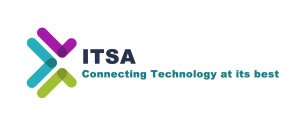 For anyone who doubts the power and prevalence of ‘disruptive technologies’—defined by a Harvard Business School professor as a new technology that unexpectedly displaces an established technology—just look at the speed of adoption of new technologies today versus a few decades ago. According to a recent article in Computerworld, it took the telephone 25 years to penetrate just 10 percent of U.S. households and another 39 years to reach 40 percent. However, the same article goes on to highlight that “colour television took 18 years to reach 50 percent of households,” smartphones “just 10 years to reach 40 percent adoption,” and the “tablet less than three years to reach 10 percent penetration.”
For anyone who doubts the power and prevalence of ‘disruptive technologies’—defined by a Harvard Business School professor as a new technology that unexpectedly displaces an established technology—just look at the speed of adoption of new technologies today versus a few decades ago. According to a recent article in Computerworld, it took the telephone 25 years to penetrate just 10 percent of U.S. households and another 39 years to reach 40 percent. However, the same article goes on to highlight that “colour television took 18 years to reach 50 percent of households,” smartphones “just 10 years to reach 40 percent adoption,” and the “tablet less than three years to reach 10 percent penetration.”
These figures clearly illustrate that the speed of adoption of disruptive technologies is accelerating, and this doesn’t just impact consumers. Rapidly emerging trends and technologies such as cloud computing, Bring Your Own Device (BYOD), and big data pose several challenges for organisations—capturing the attention of information technology (IT) professionals, CEO’s, and even government leaders.
In order to mitigate the security risks, costs, and complexities associated with emerging technologies, it’s important for organisations to recognise which disruptors are here to stay and how to prepare for their adoptions. To assist in this mitigation, below is list of some of the biggest game changers from 2012 that will continue to play major roles this year in the way organisations think about and build their IT infrastructures:
Cloud computing
Perhaps one of the biggest disruptive technologies to come to market, cloud computing is attractive to organisations because of its scalability and security, which can lead to productivity gains and an enhanced bottom line. According to Gartner, by 2016, “more than 50 percent of Global 1000 companies will have stored customer-sensitive data in the public cloud.”
Bring Your Own Device (BYOD)
The BYOD phenomenon is unique and impactful for two key reasons: the first is that it represents the consumerisation of IT—the trend of personal tech products, such as smartphones and tablet devices, spilling over from the consumer environment into the workplace. The second has to do with BYOD’s speed of adoption, which is unprecedented. To put it in perspective, Gartner predicts that “mobile phones will officially overtake PC’s in 2013 as the most commonly used devices to access the web.”
The ‘Internet of Things’
A concept that’s quickly gaining ground, the ‘Internet of Things’ refers to the ability for “consumer devices and appliances, such as washing machines and furnaces, to communicate with one another via web access and a complex system of embedded sensors.” A great example, taken from this year’s Consumer Electronics Show (CES), is a refrigerator that can confirm it has all of the necessary ingredients for a dish and then signal to the oven to start warming up. Once the oven reaches the desired temperature, it then alerts the homeowner via a message flashed across the TV. Considering that consumers can already use their smartphones as remote controls and more, it isn’t a stretch to envision the ‘Internet of Things’ in the workplace.
Big Data
According to IBM, we create 2.5 quintillion bytes of data every day—so much that 90 percent of the data in the world today has been created in the last two years alone. All of this falls under the definition of big data and includes the data used to gather climate information, cell phone GPS signals, and posts to social media sites. Because of its volume, big data presents a significant challenge for business leaders who aren’t sure how to leverage what it can teach them.
Although there’s no real way to prepare for disruptive technologies, there are a number of steps business leaders can take to protect their companies from any complexities associated with their adoption:
Adopt a multi-vendor or standards-based approach to network infrastructure
In the past, companies like Cisco heavily promoted the single vendor approach to network architecture as an easier, more cost-effective way to build and maintain data centres. However, given the accelerated lifecycle of today’s IT solutions, it’s no longer practical to limit company networks to just one manufacturer. In order to control costs and maintain flexibility, business leaders need to adopt solutions that integrate well with other systems, making it easier to adopt newer technologies without reinventing the wheel. One way to do this is to consider partnering with an independent technical solutions provider. If your company has historically worked with one manufacturer, an independent technology provider can help you drive simplicity and reduce costs with solutions from multiple vendors.
Look for IT solutions specifically architected for emerging technologies
Although Cisco remains a dominant force in network infrastructures, their solutions are architected on hardware instead of virtualisation software—making it significantly more complex and costly for their customers to convert to virtualisation. In order to reduce costs and achieve increased throughput in a virtual machine (VM) environment, IT leaders should stay on the lookout for up-and-coming companies offering solutions specifically architected for the new generation of networking and security equipment. Generally founded within the last decade, their solutions will offer high-performing networking, server, and storage capabilities while enabling customers to control costs, improve scalability and security, and achieve nearly unlimited flexibility in architectural design.
Train employees
Talent management experts have long touted the philosophy that people are a company’s greatest asset, and this could not hold truer than in the technology sector. To stay ahead, companies must ensure that their IT professionals are fully aware of and knowledgeable about the latest trends and developments in the tech industry. To do this, give employees access to tools and resources that will keep them informed about new products or strategies that could affect the company. Routinely challenge them to think of new and creative ways to cut costs or improve operational efficiency through new technologies. If you work with an independent hardware provider, take advantage of their customer demo lab in order to test new solutions and see how they could impact your business.
Adopt Now, Benefit Later
Rather than shy away from emerging technologies, organisations can stay ahead of the curve by familiarising themselves with the latest trends, developments, and solutions in IT infrastructure. Although disruptive technologies pose several challenges, they can also improve an organisation’s operational efficiency and make life easier for employees. Experts believe that by 2020—thanks to disruptive technologies—smartphones will be cheaper, computers will be able to learn by themselves, and cloud computing will provide limitless power and storage. In order to alleviate the security risks, costs, and complexities associated with emerging technologies, IT leaders should be vendor-agnostic, well-informed about new developments in technology, and always open to new ideas and solutions.
Justin Hadler is Director of Engineering at Hardware.com
 CIE Components in Electronics
CIE Components in Electronics



